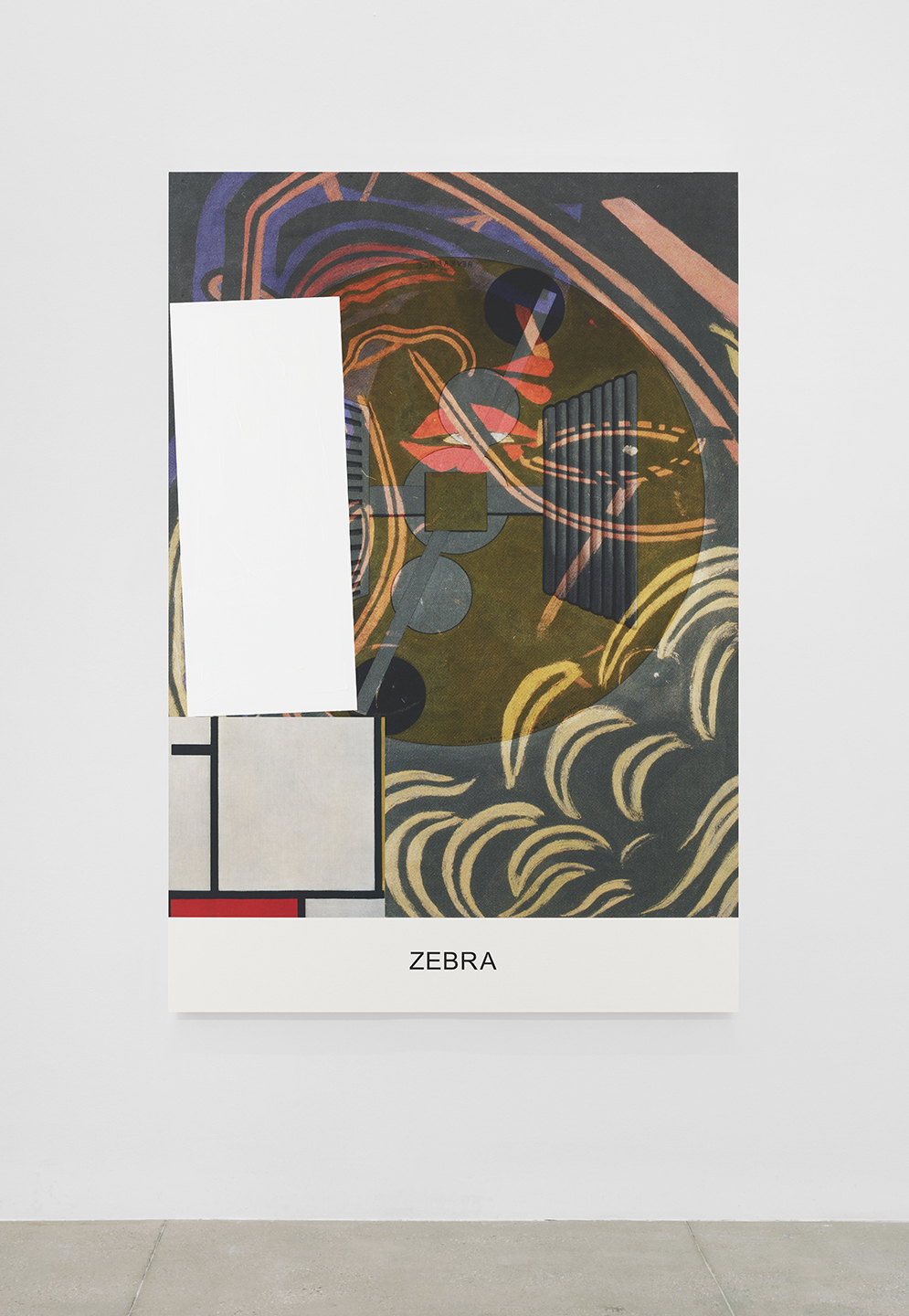Exhibition Review: John Baldessari All Z’s (Picabia/Mondrian)
Varnished inkjet print on canvas with acrylic paint
75 x 54 x 1 1/2 in. (190.5 x 137.2 x 3.8 cm)(20055)
Photo Credit © Cathy Carver
By Billy Anania
John Baldessari assumes the roles of editor and curator in his artistic process. That is, he appropriates and synthesizes works by other artists, creating new meanings through juxtaposition. As such, he revitalizes historic iconography and challenges viewers to interpret in new ways. His latest series combines abstractions by Francis Picabia and Piet Mondrian, two 20th-century masters with contrasting painting styles. All Z’s (Picabia/Mondrian) features conceptual designs from 2017 and runs through late June at Marian Goodman Gallery in Midtown.
Varnished inkjet print on canvas with acrylic paint
78 1/2 x 54 x 1 1/2 in. (199.4 x 137.2 x 3.8 cm)
Photo Credit © Cathy Carver
A pioneer in the Dutch De Stijl movement, Piet Mondrian developed a signature painting style out of rigid linework and primary colors. In contrast, Picabia experimented with Cubism in France, favoring fluidity and earthy tones. Despite their differences, the two painters were contemporaries who produced their best-known work from the early 1910s to the 1930s. But Baldessari seems indifferent to their legacies, however, as seen through the integration and distortion of classic imagery. Mondrian’s geometric grids are layered over Picabia’s twisting shapes and patterns. And Baldessari places white rectangles at seemingly random locations in the collages, building on their fragmentary nature with his own signature flourishes.
Varnished inkjet print on canvas with acrylic paint
82 3/4 x 54 x 1 1/2 in. (210.2 x 137.2 x 3.8 cm)
(20062) Photo credit © Cathy Carver
At the bottom of each work is another white bar bearing words that start with the letter Z. These enigmatic terms draw viewers’ attention away from the imagery, leaving them to speculate on their meaning and context within larger frames. Common words like “Zeal,” “Zap” and “Zany” are shown alongside scientific terminology like “Zeatin” (a type of plant hormone) and “Zamia” (an exotic plant genus) and artistic terms like “Zarzuela” (a genre of Spanish lyric drama).
These terms have very loose associations with their artistic counterparts. There is nothing particularly zany about shades of blue, white and brown with patterned flowers. Similarly, a piece bearing the title “Zebra” bears little similarity to the striped African equine. But definitions of terms are malleable in abstract art, and Baldessari seems keenly aware of this.
Varnished inkjet print on canvas with acrylic paint
79 3/4 x 54 x 1 1/2 in. (202.6 x 137.2 x 3.8 cm)(20048)
Photo credit © Cathy Carver
Blank spaces between fragments of fine art show how the artist creates–quite literally–a gap in scholarship, leaving new opportunities for dialogue. This is not to say that Baldessari aims to disrespect two legendary artists. Rather, he seems to be meditating on art history’s inherent limitations. Instead of studying one painter or the other, perhaps they could be studied simultaneously.
With this series, Baldessari continues to re-associate image and text in new ways. Content overloads each frame, which bears a striking resemblance to a smartphone screen. The symbols all exist together–and a few of them are familiar–but can they all be understood together? Does their proximity dilute their features or enhance them? And what does this mean for our own symbolic perception? The answers are all in the interstitial space.
John Baldessari: All Z’s (Picabia/Mondrian) will be on display until June 22 at 24 W 57th St. Visit www.mariangoodman.com for more information.
Photo credit © Cathy Carver












